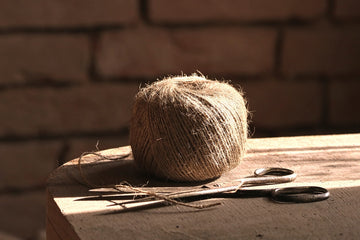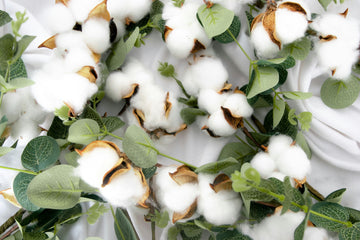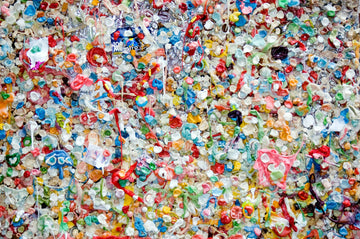As we seek out sustainable alternatives to conventional materials, natural jute has emerged as a frontrunner. This versatile, biodegradable fiber is making waves across industries, especially in eco-conscious packaging, fashion, and promotional products. Known as the "golden fiber" for its silky sheen and strength, jute is a renewable resource that’s also highly affordable, making it an excellent choice for both businesses and consumers looking to minimize their environmental impact.
In this article, we’ll explore what makes natural jute so eco-friendly, its various applications, and why incorporating jute into everyday products and branding is a step toward a more sustainable future.
What is Natural Jute?
Jute is a long, soft, and shiny vegetable fiber that can be spun into coarse, strong threads. It comes from the Corchorus plant, which is grown primarily in warm, humid regions like India and Bangladesh. Jute is the second most important natural fiber after cotton in terms of production volume and usage worldwide.
One of jute's key attributes is its rapid growth rate. The plant can reach maturity in just 4 to 6 months, making it a highly renewable resource. Moreover, jute requires little to no use of pesticides or fertilizers, further reducing its environmental footprint.
Why Jute is a Sustainable Material
Several features make natural jute a standout material when it comes to sustainability:
- Biodegradable and Compostable: Unlike synthetic fibers such as plastic, jute breaks down naturally. It’s fully biodegradable and compostable, making it an environmentally friendly option for products like bags, packaging, and textiles.
- Low Water and Pesticide Usage: Jute is grown in rain-fed regions, meaning it doesn’t require extensive irrigation. Additionally, it’s naturally resistant to pests, so farmers don’t need to use harmful pesticides that can contaminate soil and water.
- Carbon Sequestration: Jute plants absorb carbon dioxide from the atmosphere and release oxygen, helping to mitigate climate change. In fact, one hectare of jute cultivationcan absorb as much as 15 tons of CO2 during its growth cycle.
- Soil Health: Jute cultivation is beneficial to soil health, as the plant's roots help prevent soil erosion. Additionally, jute can be grown in rotation with other crops, enriching the soil and increasing the productivity of agricultural land.
Everyday Applications of Jute
Jute's strength, durability, and eco-friendly characteristics have led to its use in a wide range of products. Here are some key areas where jute is making a difference:
1. Eco-Friendly Bags and Packaging
One of the most popular uses for jute is in the production of reusable bags. Jute bags offer a durable and stylish alternative to plastic bags and are often used for shopping, packaging, or promotional gifts. Many businesses are turning to jute for branding purposes, using these eco-friendly bags as a way to promote sustainability.
Jute’s durability and natural texture also make it ideal for eco-friendly packaging. Whether used as wrapping for gifts or as padding for products, jute adds a rustic, sustainable touch to any packaging solution.
2. Textiles and Home Decor
Jute is commonly used in home textiles, such as rugs, curtains, and upholstery. Its natural fibers give it a unique aesthetic that complements a range of interior styles, from minimalist to rustic. Jute rugs, in particular, are popular for their durability and natural look.
In fashion, jute is often blended with other natural fibers to create stylish yet sustainable clothing and accessories. From handbags to shoes, jute adds a natural, earthy vibe to fashion items.
3. Agricultural Uses
Jute’s biodegradability also makes it a valuable material in agriculture. Jute twine is used to bind crops, and jute sacks are widely used to store and transport agricultural produce like potatoes and coffee beans. Since the material is compostable, it doesn’t leave harmful residues in the soil after use.
4. Furniture and Furnishings
In addition to textiles, jute is used in furniture manufacturing. Jute webbing is commonly found in the upholstery of chairs and sofas, providing a strong and durable base. As consumers become more aware of sustainability, jute-based furniture is growing in popularity, offering an eco-friendly alternative to synthetic materials.
Why Jute is a Smart Choice for Corporate Gifts and Swag
When it comes to corporate gifts and promotional items, businesses are increasingly looking for products that align with sustainability values. Jute is an ideal material for a variety of swag items, helping businesses promote their brand while staying eco-conscious.
1. Branding with a Purpose
Using jute-based products like tote bags, pouches, or office supplies allows companies to convey their commitment to sustainability. These products serve as a practical reminder of your brand’s eco-friendly values while offering recipients durable and stylish alternatives to single-use items.
2. Versatile and Practical Gifts
Jute products are not only sustainable but also versatile. From tote bags to laptop sleeves, jute’s natural fibers can be woven into a variety of corporate gifts that are both functional and fashionable. These products offer long-lasting value, helping your brand stay top of mind.
Jute in Everyday Sustainability
Incorporating jute into everyday life is a simple way to support sustainable practices. Here are some practical steps you can take:
1. Replace Plastic Bags with Jute
Swapping out plastic bags for reusable jute bags is one of the easiest ways to reduce your environmental footprint. Jute bags are not only sturdy but also stylish, making them perfect for shopping or carrying daily essentials.
2. Choose Jute Packaging
For businesses looking to reduce their use of plastic, jute offers an excellent alternative for packaging. Whether used as wrapping for gifts or product padding, jute adds an eco-friendly touch that customers appreciate.
3. Opt for Jute in Home Decor
Incorporating jute into your home through rugs, curtains, or even furniture can reduce the environmental impact of your home furnishings. Jute’s natural fibers give any room a warm, rustic feel while being kinder to the planet.
Conclusion: The Role of Jute in a Sustainable Future
As we continue to seek out eco-friendly materials, natural jute offers an affordable, renewable, and versatile solution. Its low environmental impact, combined with its wide range of applications, makes it an ideal choice for sustainable living and business practices. Whether you’re looking for eco-friendly corporate gifts, packaging, or home furnishings, jute provides a durable and stylish alternative that supports a greener future.
By embracing jute, we can reduce our reliance on plastic and synthetic materials, protect natural resources, and promote sustainability in our daily lives and businesses. Choosing jute is a small but meaningful step toward creating a more eco-friendly world.





